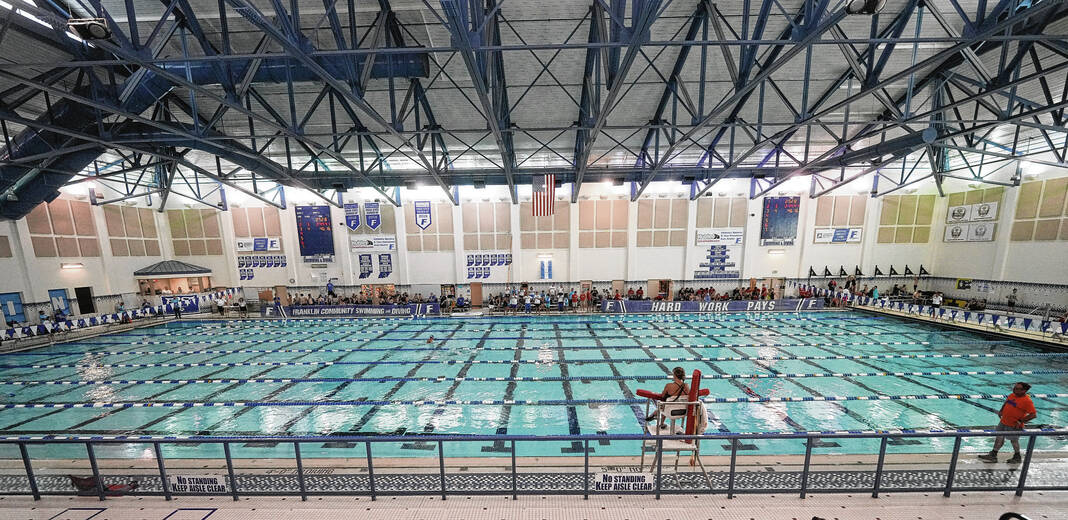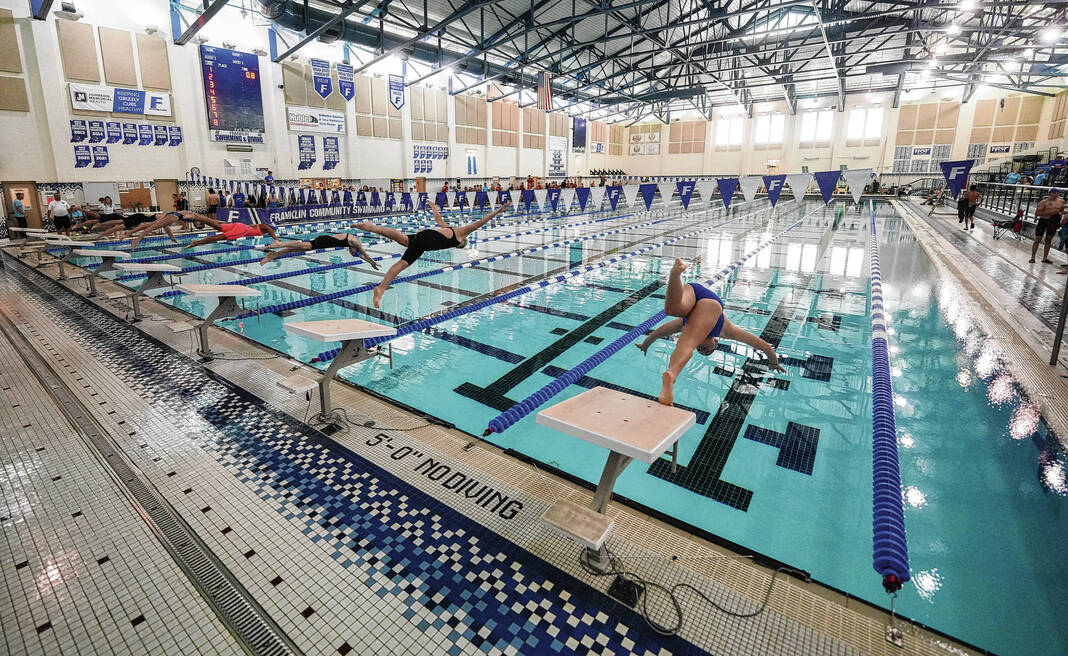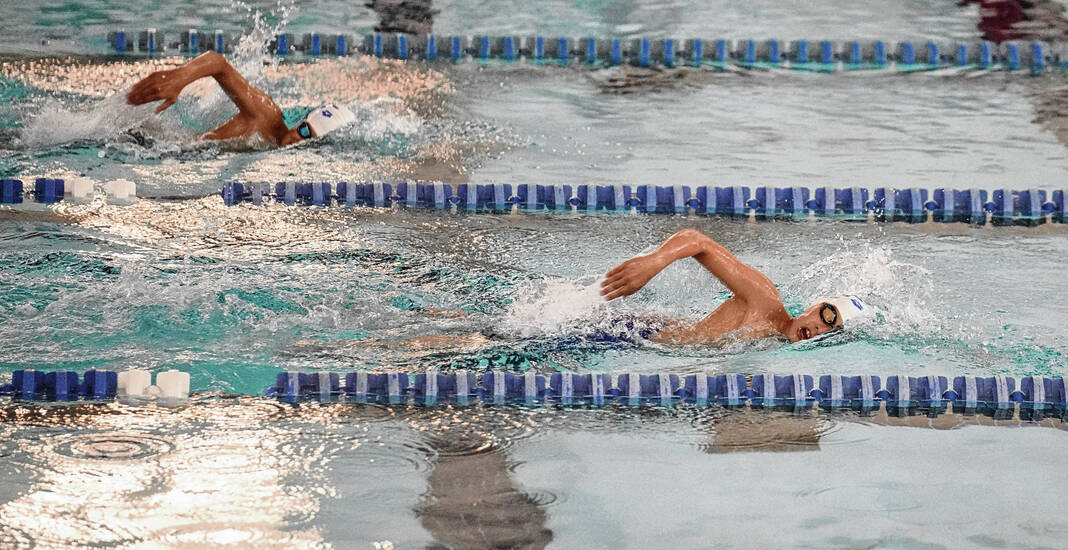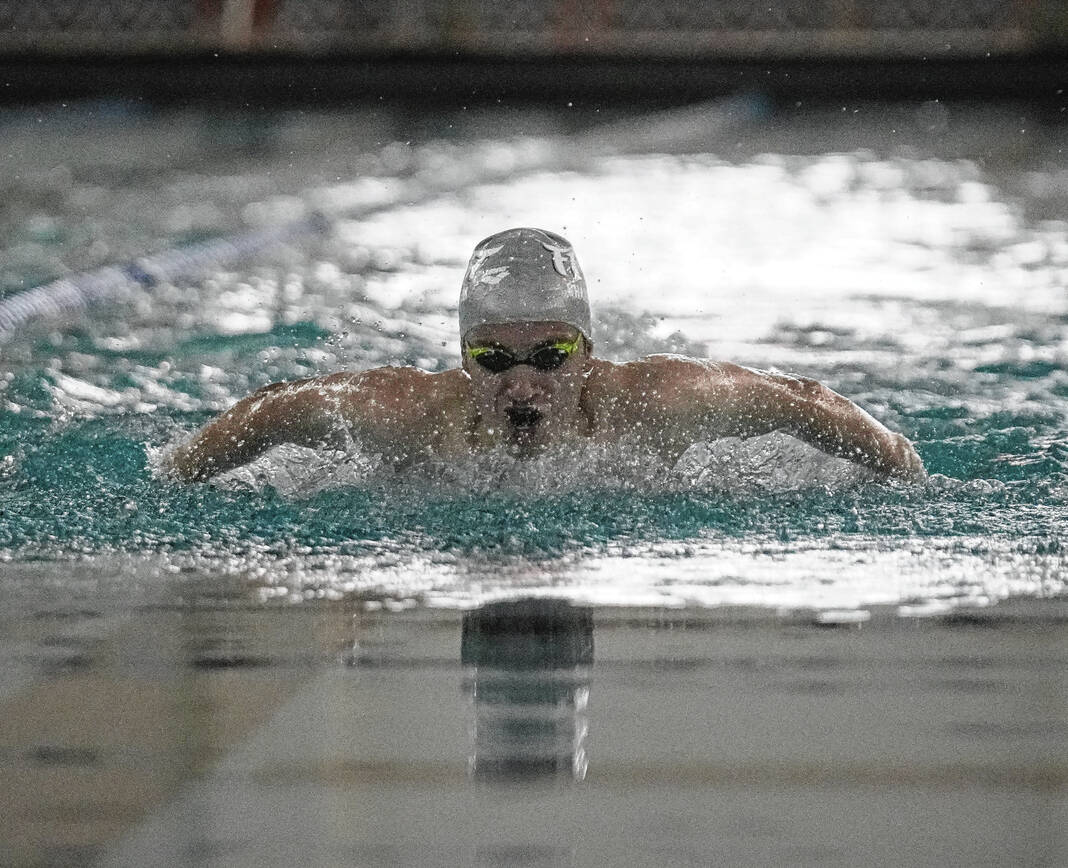“You don’t know what you’ve got ‘til it’s gone.”
When it comes to competitive swimming, that old saying takes on a whole new meaning.
What looks like two separate 25-yard pools for most of the year at Center Grove or Franklin transforms during the summer months, when both facilities slide that bulkhead divider out of the way to create a single 50-meter Olympic-sized pool.
This is, in swimming parlance, the long course season — and in many ways, it’s a very different animal from the 25-yard short course setup that folks who only pay attention during the school year are more accustomed to. Much like distance running on a track isn’t the same as running cross country, there are certain skill sets that prove more beneficial in short course than long, or vice versa.
“Long course features the best quote-unquote swimmers, and short course often features the best, what we would call athletes,” Franklin Regional Swim Team coach Zach DeWitt explained. “Short course game is an athlete’s game, and by that, a lot of explosion. The addition in walls and underwaters tend to highlight athleticism in general, whereas long course, more of an aerobic base, a little bit more of a grind, and you’ll see somebody that maybe has a masterful approach to technique on top of the water, they start to sift out. So yeah, there are such things as good short-course swimmers or good long-course swimmers. Sometimes they translate, and other times they don’t.
“What tools you have in your tool belt get accentuated. There are people like Caeleb Dressel that can play in both worlds, but there’s also a lot of people that are really prevalent in one and not so much the other.”
And some swimmers have a clear preference. In many cases, those who perform better in distance events tend to see better results when the pool length stretches out.
“I feel like I’m in the minority of swimmers when I say this, but long course is definitely better,” said Center Grove Aquatic Club swimmer Aleks Parsetich. “I can get up to speed, I can work on my strokes longer.”
“You definitely need more endurance to do well in long course rather than short course, because there’s no walls,” FRST distance specialist Isaac Layton agreed. “You can’t rely on that.”
Indeed, the wall placement makes a big difference. Many of the more explosive swimmers who excel at sprints during short course season rely on the walls to regenerate momentum every 25 yards; the actual strokes don’t factor in as much. When Dressel went a blistering 17.63 seconds in the 50-yard freestyle at the 2018 NCAA Championships, he needed just eight strokes to get to the first wall and 11 more to get back.
By contrast, Dressel used 36 strokes to go 50 meters at the 2021 Olympics, winning in a record time of 21.07 seconds.
In long course, not having that wall there takes some getting used to.
“You can definitely tell in the first month of training,” CGAC coach Brad Smith said. “They’re looking for that wall at the 25 mark.”
As a result, the approach to summer training is different. There’s less of an emphasis on explosive turns, since there are fewer of them; a higher premium is placed on swimming cleanly in between the walls.
“We really, really focus on the strokes and being efficient through the stroke,” Smith said. “I really enjoy this, because it gives us a chance to develop the strokes and work at being the most efficient that we can.”
The long course season is — well, not particularly long. Most local clubs begin training at 50 meters after spring break and continue through the summer until school starts; the championship meets for swimmers of high school age and younger, by and large, take place in late July.
But for those who do take part, the work done during the summer can certainly pay dividends when the pool goes back to 25 yards for the fall and winter.
“It’s not a sexy answer, but the work translates,” DeWitt said. “(Long course) is a grind, far more so, and so the aerobic base that you set up here does carry into the winter. Regardless of whether you take that two- or four-week break or whatever clubs are taking, you do see that, where a base can transfer to the next season.”
“Just showing up to more practices and being able to work more,” Parsetich added. “I can work on my stroke, I can get my stroke better, my kick better. Everything does translate, except for the length of the pool.”
For swimmers who want to make it to the Olympics someday, adjusting to the long course setup is a must; the 50-meter pool is the international standard. But even for those who are content to butter their bread competing for their high school teams and perhaps do the same in college, the skills that get honed during the summertime long course practices can still pay dividends when the pool shrinks back down to 25 yards.
“I just look at the whole general year-round training plan, and I look at it as a constant move forward,” Smith said. “The true swimmer, I believe, is developed in long course.”









